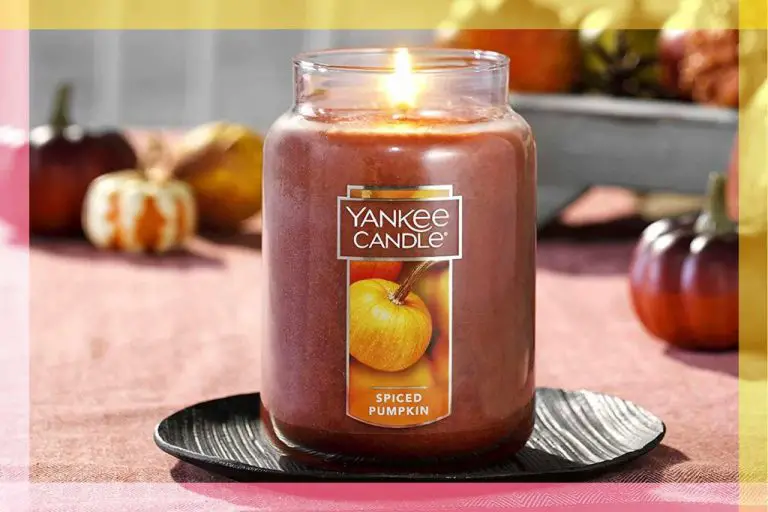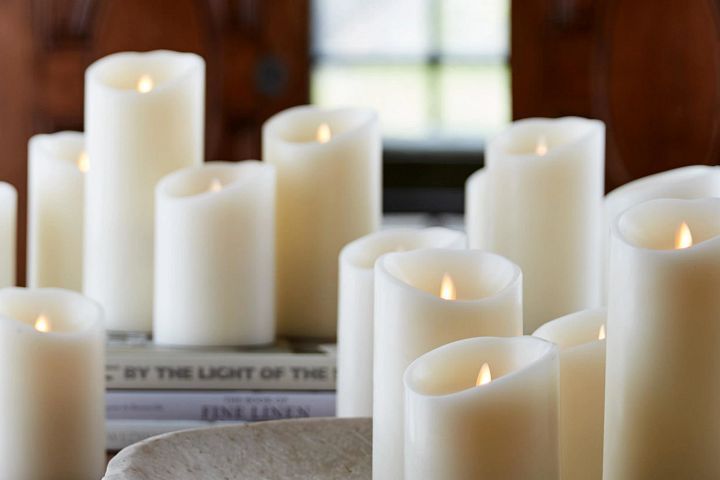Are Soy Candles Actually Better For You?
Soy candles are candles made from soy wax, which is a vegetable-based wax produced from soybean oil. Soy wax was developed in the early 1990s as an alternative to paraffin wax, which is a petroleum-based product. The modern history of soy candles dates back to the early 1980’s, and can trace it’s roots back to the early 9th century in Japan, according to research from Zuzu Candle Co. Soy wax was invented in 1991 by Michael Richards, who was looking for a cheaper and more environmentally friendly alternative to beeswax. As he experimented with different vegetable oils, he found that hydrogenated soybean oil produced an excellent wax for candle making, as explained on the History of Soy Wax – Soya website.
Unlike paraffin wax which is a byproduct of petroleum refining, soy wax is made from a renewable resource. Many makers and consumers choose soy candles because they are often perceived as being more natural and environmentally sustainable.
Potential Benefits of Soy Candles
Soy candles are often touted as a healthier, more natural alternative to paraffin wax candles. Some of the potential benefits of soy candles include:
- Non-toxic, natural ingredients – Soy wax is made from soybean oil, a renewable and biodegradable resource. Unlike paraffin wax which is a petroleum byproduct, soy wax does not release potentially harmful volatile organic compounds (VOCs) when burned (https://selfmadecandle.com/blogs/candles/benefits-of-soy-wax-candles-and-why-they-should-be-your-go-to-choice).
- Cleaner burn – Soy candles produce very little soot or smoke when burned. This makes them a good option for people sensitive to smoke and particulate matter in the air (https://www.pureintegrity.com/blog/soy-wax-healthier-choice-candle-addiction.html).
- Longer burn times – The natural texture of soy wax allows for a slower wax pool formation, resulting in candles that last 50-100% longer than paraffin candles.
With natural, renewable ingredients and cleaner emissions, soy wax candles are considered an eco-friendly and healthier alternative to paraffin candles. Those sensitive to petroleum byproducts may find soy candles easier on their lungs and overall indoor air quality.
Concerns About Paraffin Candles
Many conventional candles are made from paraffin wax, which is a byproduct of petroleum refining. When burned, paraffin candles release compounds like toluene, benzene, and acetaldehyde which may be toxic or carcinogenic according to some studies (https://www.healthline.com/health/are-candles-bad-for-you).
One study found that burning paraffin candles can emit significant amounts of black soot and polyaromatic hydrocarbons, which have been linked to lung conditions and cancer risks (https://www.ncbi.nlm.nih.gov/pmc/articles/PMC9832800/). The soot released can also dirty walls, furniture, and surfaces in a home.
While more research is still needed, some health experts recommend avoiding paraffin candles as a precautionary measure. The concern is that frequent use in a small indoor space may allow higher accumulation of potentially hazardous compounds in the air over time.
Soy Wax vs Paraffin Wax
When comparing soy wax to paraffin wax, there are a few key differences. Soy wax produces less soot and smoke than paraffin (https://lonestarcandlesupply.com/soy-vs-paraffin/). The natural Cotton wick used with soy candles curb the mushrooming effect that occurs with paraffin wax, resulting in less soot.
Additionally, soy wax has a lower melting point than paraffin, so it requires less heat to melt the wax pool. This results in a cooler, safer burn. Paraffin wax releases higher levels of benzene and toluene when burned, while soy wax does not (https://lonestarcandlesupply.com/soy-vs-paraffin/).
In terms of burn time, paraffin candles tend to burn longer than soy candles. The higher melting point of paraffin wax means it liquefies slower as the candle burns. However, soy candles can achieve comparable burn times with proper wicking.
Overall, soy wax produces less soot and smoke compared to paraffin. While paraffin may burn slightly longer, soy wax provides a cleaner, cooler burn. With the right wick, soy candles can have an equivalent burn time as paraffin.
Fragrance and Essential Oils
One of the main considerations with soy candles is whether to use natural essential oils or synthetic fragrance oils. Essential oils are extracted from plants and can provide pleasant aromas. However, they are often more expensive and may not always produce as strong of a scent. Synthetic fragrance oils are artificially created in a lab to mimic natural scents. They are typically more affordable and project aromas more powerfully. According to one Reddit user, Candle Science’s Apple Jacks and Peach fragrance oils perform exceptionally well in soy candles.
When deciding on fragrance, it’s worth considering if you want a 100% natural soy candle. While synthetic fragrances allow creativity and customization, some people prefer the authenticity of essential oils. There are soy candle brands like Pacifica that only use natural fragrances. Ultimately, it depends on personal preference and budget. Both real essential oils and lab-created fragrances have their merits when making soy candles.
Testing and Certifications
There are a few key organizations that provide testing and certifications for soy candles to ensure safety and quality:
The International Fragrance Association (IFRA) issues IFRA Certificates that indicate if a fragrance oil is safe for use in different applications like candles. IFRA conducts research and provides guidelines on safe fragrance usage. Reputable candle makers should have IFRA certificates for their fragrances to show they meet IFRA standards (Armatage Candle Company).
The National Candle Association has a candles science and testing division focused on safety, labeling standards, and best practices. They provide resources for candle makers on following proper procedures and testing.
ASTM International sets quality and safety standards for candles through ASTM Committee F15 on Consumer Products. ASTM F2326 is a standard specific to candle products that covers labeling, instructions, design, and testing criteria.
The FDA regulates candle labeling and safety in the US. The FDA prohibits certain colorants and requires proper ingredient labeling. The FDA also provides guidance on lead wick requirements and flame height.
Certified soy wax like that from the National Soy Wax Candle Making Institute meets standards for a 100% natural and renewable soy wax. The Institute provides testing data and certifications for approved soy wax suppliers.
Soy Candle Brands
Some of the most popular and reputable soy candle brands include:
P.F. Candle Co. – Founded in 2014 by Kristen Pumphrey and Thomas Neuberger, P.F. Candle Co. is known for its clean-burning, long-lasting, and luxuriously scented soy candles. Top sellers include the Amber & Moss, Mahogany Teakwood, and Sea Salt & Orchid candles.
Village Candle – With a wide range of scents across various collections like the Coastal Collection and Aromatherapy Collection, Village Candle has been crafting soy candles since 2010. They use 100% soy wax and pure essential oils.
Homesick – Specializing in nostalgic, location-based scents, Homesick soy candles aim to capture a sense of place. Popular picks include the California Dreamin’, Grand Hotel, and Mom scents.
Yankee Candle – Though better known for paraffin, Yankee Candle has an extensive line of soy candles too. Favorites include the Pink Sands, MidSummer’s Night, and Sun & Sand soy candles.
Nature’s Mantra – Using ethically-sourced soy wax and organic essential oils, Nature’s Mantra offers 100% soy candles in earthy scents like Cedarwood & Sage, Wildflower Honey, and Moroccan Mint.
Cost Comparison
When it comes to pricing, soy wax candles tend to be more expensive than paraffin wax candles. This is because soy wax is derived from soybeans, which is a more expensive base material than paraffin wax, which is a petroleum byproduct.
The average price for a soy wax candle is around $15-25 for a medium sized 8-12 oz candle, whereas a paraffin candle of the same size may cost $5-15 on average. Paraffin candles made from premium waxes sourced from France with added beeswax can also be more costly, ranging from $10-20 (Simplenesscollection.com).
In bulk, soy wax can cost $3-6 per pound, while bulk paraffin wax may range from $0.80-3 per pound. This can make a significant difference for candle makers buying large quantities of wax (Slatkinandco.com).

However, supporters of soy wax claim the higher price is worthwhile, as soy candles burn slower, cleaner, and are thought to be more environmentally friendly. The potentially higher quality and performance helps justify the extra cost for many seeking a premium, natural candle.
Making Your Own Soy Candles
Making your own soy candles at home is a fun DIY project that allows you to fully control the ingredients. The basic process involves melting soy wax flakes, adding fragrance oils and other additives, and pouring into a container to set.
You’ll need soy wax flakes, which can be purchased from craft stores or online retailers like CandleScience.com (https://www.candlescience.com/learning/how-to-make-a-soy-candle/). Pour 1-2 pounds of soy wax flakes into a heat safe pouring pitcher or stainless steel pot depending on the size of your candle.
Next, melt the soy wax using a double boiler over low heat until fully liquefied. Do not overheat the wax. Once melted, remove from heat. Add your preferred fragrance oils and candle colorants at this stage, following the recommended usage instructions. Gentle stir to fully incorporate.
Prepare your candle jar or container, leaving room at the top for the melted wax. Carefully pour the wax into the container. Allow the candle to fully set and cool before trimming the wick and using. Making soy candles requires some basic safety precautions – work in a well ventilated area, wear gloves to protect from hot wax, and avoid open flames while pouring (https://simplylivingwell.com/blog-home/6irr9h2jr4n4eycp5jecrl5trn9w0x).
Conclusion
After reviewing the potential benefits and drawbacks of soy candles versus paraffin candles, there are a few key takeaways:
Soy wax burns cleaner than paraffin wax, producing less soot. This makes soy candles a better choice for people concerned about indoor air quality. However, both candle types produce some soot when burned. Proper ventilation is recommended with any candle.
Soy wax is made from a renewable resource while paraffin wax is a petroleum byproduct. Soy candles are often marketed as the more eco-friendly option. However, growing soybeans has environmental impacts too.
100% soy wax candles are more expensive than paraffin candles in most cases. The price difference may be worthwhile for some consumers seeking a cleaner burn. But paraffin candles can be affordable and effective too.
When it comes to home fragrance, both soy and paraffin candles get the job done. Look for candles with essential oils or subtle, natural fragrances. Avoid candles with synthetic fragrances which can contain toxic chemicals. Ventilate properly when burning any candle.
Making your own candles at home using soy wax is an option if you want 100% control over the wax, wicks, and fragrances used. But proper safety precautions are essential when working with hot wax. Purchasing candles from a reputable retailer is easiest for most consumers.
In conclusion, soy candles are a good option for eco-conscious consumers wanting to avoid petroleum products. However, paraffin candles remain popular due to their lower cost and wide availability. Carefully research any candle product before burning to ensure you’re comfortable with the ingredients.





